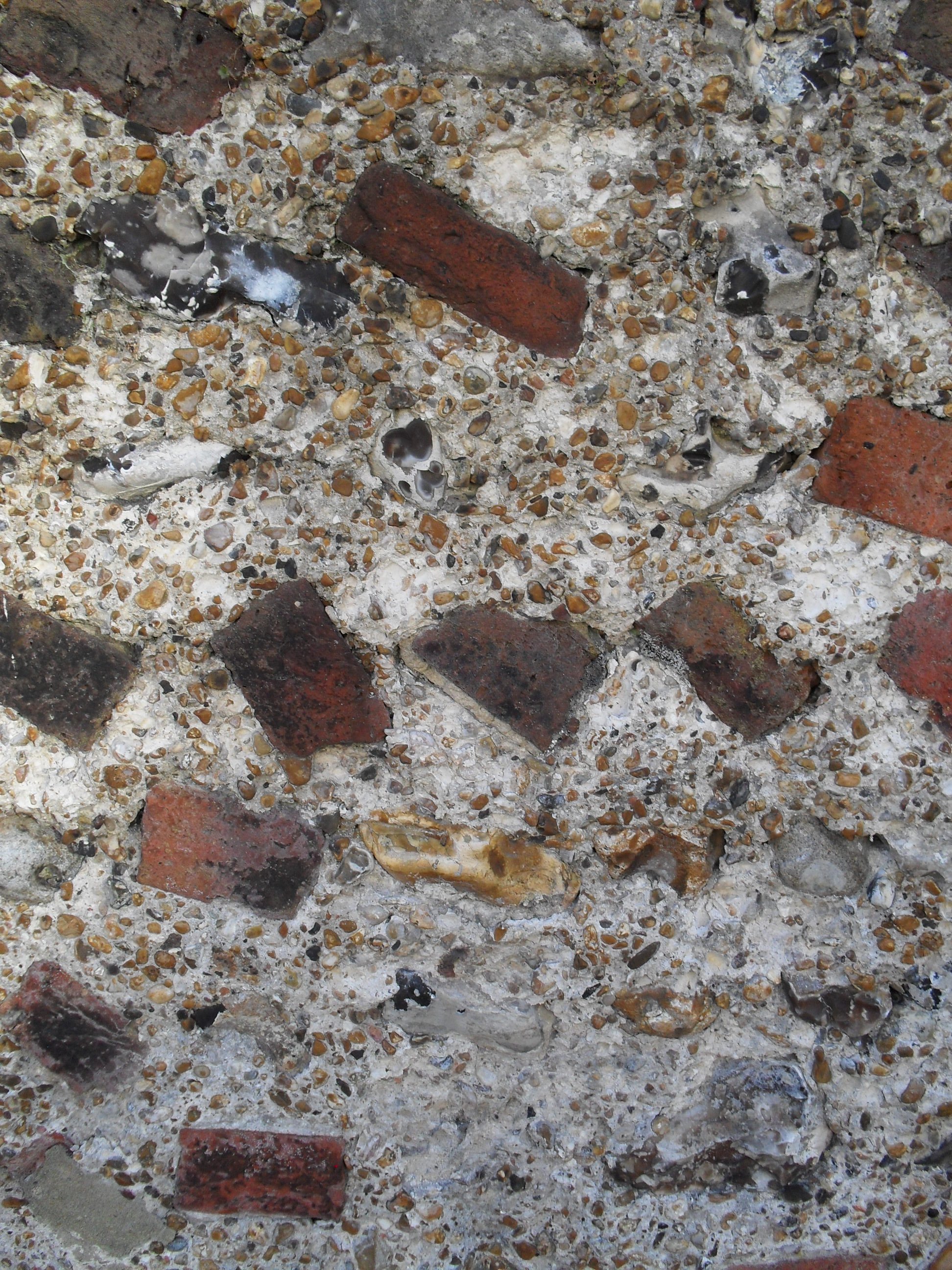Bungaroosh
Bungaroosh (also Bangaroush) is a composite building material made from lime, gravel, coarse sand, flints and sometimes brick fragments or other brick rubble. The spelling of the word has many variations, including bungeroosh, bungarouche, bungarooge, bunglarooge, bunglarouge and so on. As a wall construction material it pre-dates cement based concrete.
Walls made from bungaroush are almost exclusively found in the English seaside towns of Brighton (particularly in the Kempton neighbourhood) and Hove, where it was a popular product during the 18th and 19th centuries. Many Regency homes in Brighton and Hove that do not have brick walls feature bungaroush masonry. It may have been popular during this time due to the availability of discarded bricks and the affordability of flint from the South Downs around Brighton.
It was considered quick, easy, strong and cheap, and was most commonly used for garden walls or rear walls - normally protected with external stucco or plaster to prevent erosion. A galetted finish made from residual flakes of stone can also be used to fill spaces and help prevent erosion.
There is an expression, 'much of Brighton could be demolished with a well-aimed hose' which is associated with the city's reliance on this method of construction which is highly susceptible to water-based erosion.
Bangaroush (or bungeroush) is 'a building material used up to c1890, especially in coastal areas of East Sussex. Employed for whole walls constructed with shuttering or as an infilling between two skins of flint or brick. Typically lime, sand and pea beach shingle were used to form a mortar to which flints and any other materials to hand were added, eg pieces of brick, pipe or wood.'
As defined by the Society for the Protection of Ancient Buildings (SPAB) defines from their online Glossary.
[edit] Related articles on Designing Buildings
Featured articles and news
RTPI leader to become new CIOB Chief Executive Officer
Dr Victoria Hills MRTPI, FICE to take over after Caroline Gumble’s departure.
Social and affordable housing, a long term plan for delivery
The “Delivering a Decade of Renewal for Social and Affordable Housing” strategy sets out future path.
A change to adoptive architecture
Effects of global weather warming on architectural detailing, material choice and human interaction.
The proposed publicly owned and backed subsidiary of Homes England, to facilitate new homes.
How big is the problem and what can we do to mitigate the effects?
Overheating guidance and tools for building designers
A number of cool guides to help with the heat.
The UK's Modern Industrial Strategy: A 10 year plan
Previous consultation criticism, current key elements and general support with some persisting reservations.
Building Safety Regulator reforms
New roles, new staff and a new fast track service pave the way for a single construction regulator.
Architectural Technologist CPDs and Communications
CIAT CPD… and how you can do it!
Cooling centres and cool spaces
Managing extreme heat in cities by directing the public to places for heat stress relief and water sources.
Winter gardens: A brief history and warm variations
Extending the season with glass in different forms and terms.
Restoring Great Yarmouth's Winter Gardens
Transforming one of the least sustainable constructions imaginable.
Construction Skills Mission Board launch sector drive
Newly formed government and industry collaboration set strategy for recruiting an additional 100,000 construction workers a year.
New Architects Code comes into effect in September 2025
ARB Architects Code of Conduct and Practice available with ongoing consultation regarding guidance.
Welsh Skills Body (Medr) launches ambitious plan
The new skills body brings together funding and regulation of tertiary education and research for the devolved nation.
Paul Gandy FCIOB announced as next CIOB President
Former Tilbury Douglas CEO takes helm.
UK Infrastructure: A 10 Year Strategy. In brief with reactions
With the National Infrastructure and Service Transformation Authority (NISTA).























